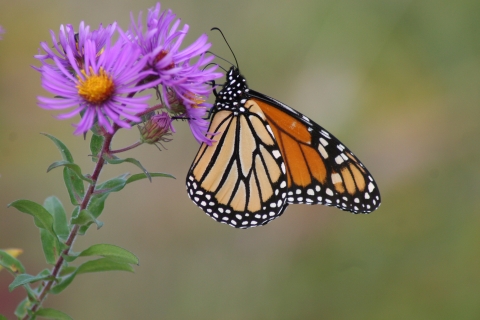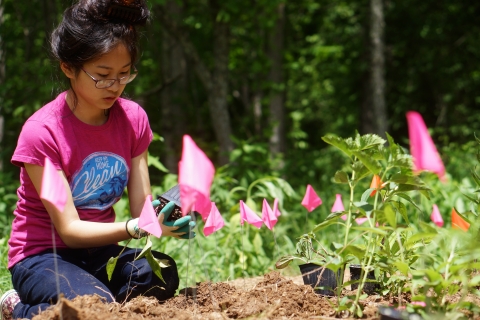As fall approaches, we at the U.S. Fish and Wildlife Service have something special for you to watch and celebrate. Mid-August typically marks the start of fall migration for millions of monarch butterflies. Adult monarchs are partway through their lifecycle, but their reproduction is on hold. These monarchs are different from their parents, grandparents and even great grandparents. Previous generations completed their life cycle in four weeks. Each of these previous generations migrated north, resulting in four generations over the course of the summer. Butterflies in this last generation are members of the generation that migrates south, often called the monarch super generation.
Imagine the journey - flying more than 3,000 miles to Mexico, not knowing where you can rest or where you will have your next meal. The sun is your guide on daily flights, traveling about 50 miles each day. You often catch free rides on thermal air currents, sometimes flying a mile high. When rain splashes down, the wind blows strong or your body temperature drops below 86 degrees, you are unable to fly.
Timing is everything
Decreasing day length and temperatures, along with aging milkweed and other nectar sources, trigger the birth of the super generation and their epic migration. They live eight times longer than their parents and grandparents - up to eight months - and travel 10 times farther. To do this, they must conserve energy by storing fat in both the caterpillar and butterfly life stages and waiting to mate until spring.
Monarchs must time their spring and fall migrations to coincide with optimal habitat conditions, including nectar flowers for butterflies and milkweed for caterpillars. Since milkweed is the only food source for monarch caterpillars, if there’s no milkweed, there are no monarchs - it’s that simple. If nectar sources and milkweed goes away, the population declines.
Creating pollinator habitat
The number of monarchs has decreased significantly over the last 20 years, and massive efforts to address this problem are currently underway. The focus is to improve habitat for pollinators, including monarchs. Given the scope of this challenge, we must all work together to improve, restore and create pollinator habitat. Together we can save the monarch.
No matter who you are or where you live, you can get involved today. Start by planting native milkweed and nectar plants that are local to your area. Garden organically to minimize your impacts on pollinators and their food plants. Become a citizen scientist and monitor monarchs in your area. Educate others about pollinators, conservation and ways they can help.








